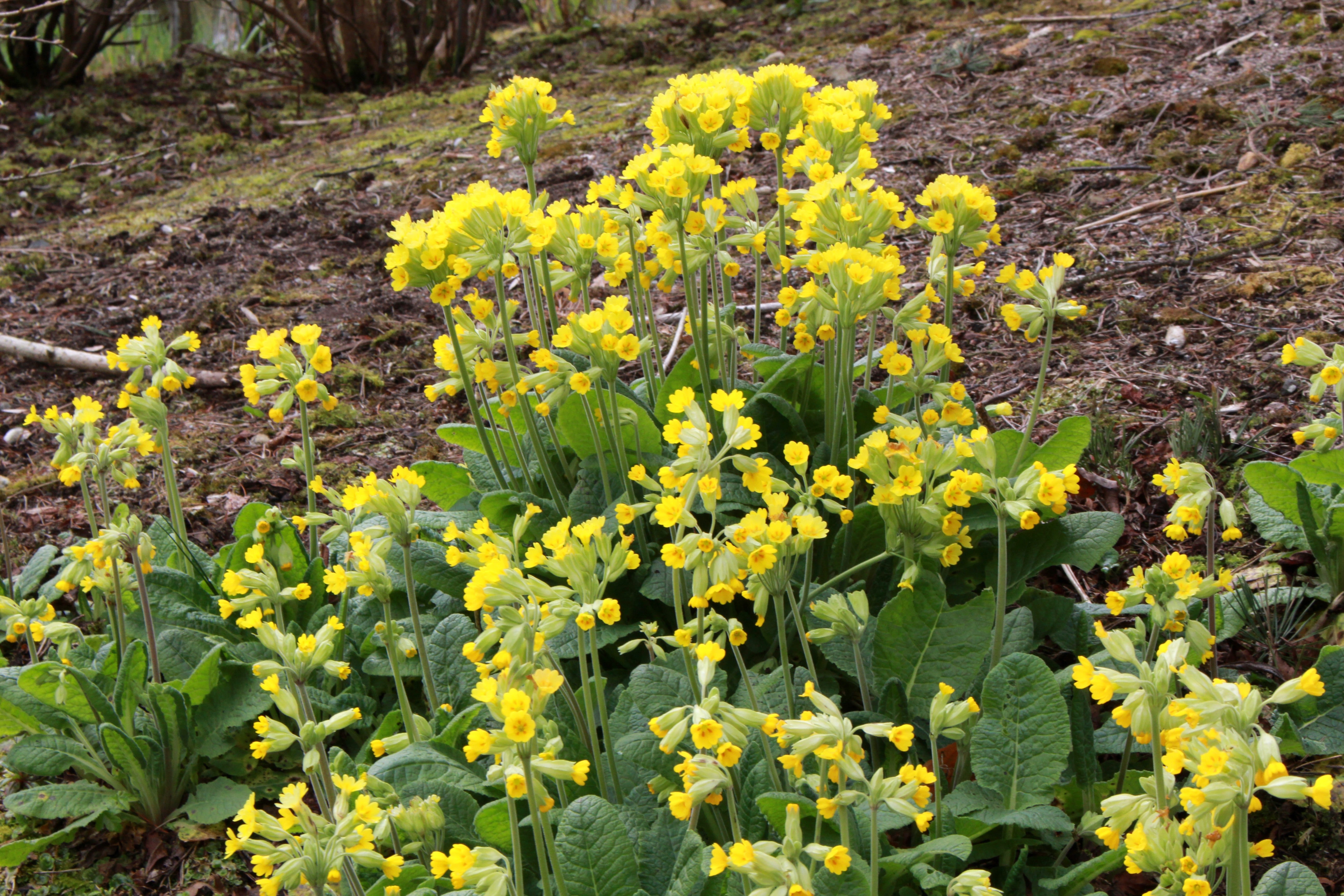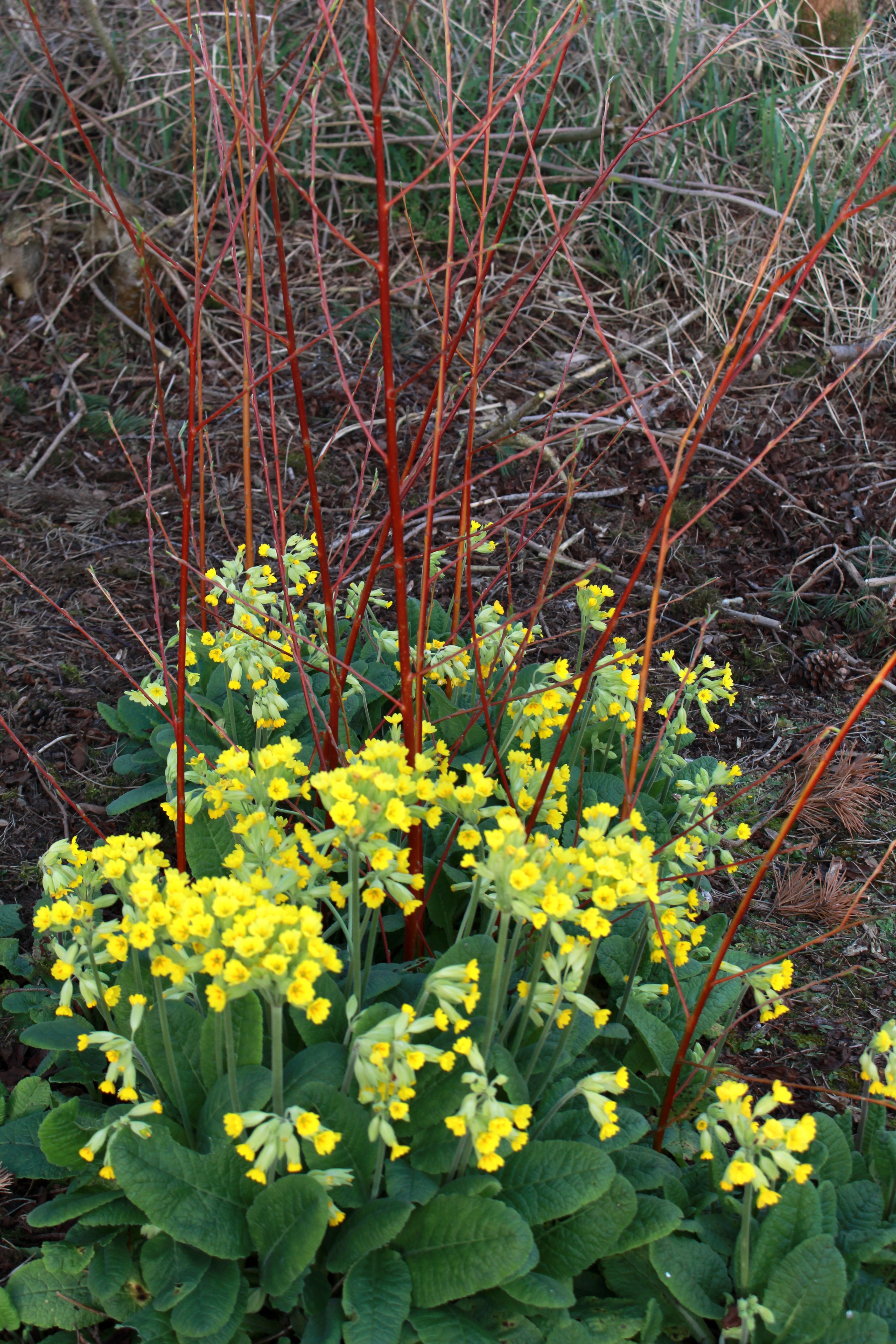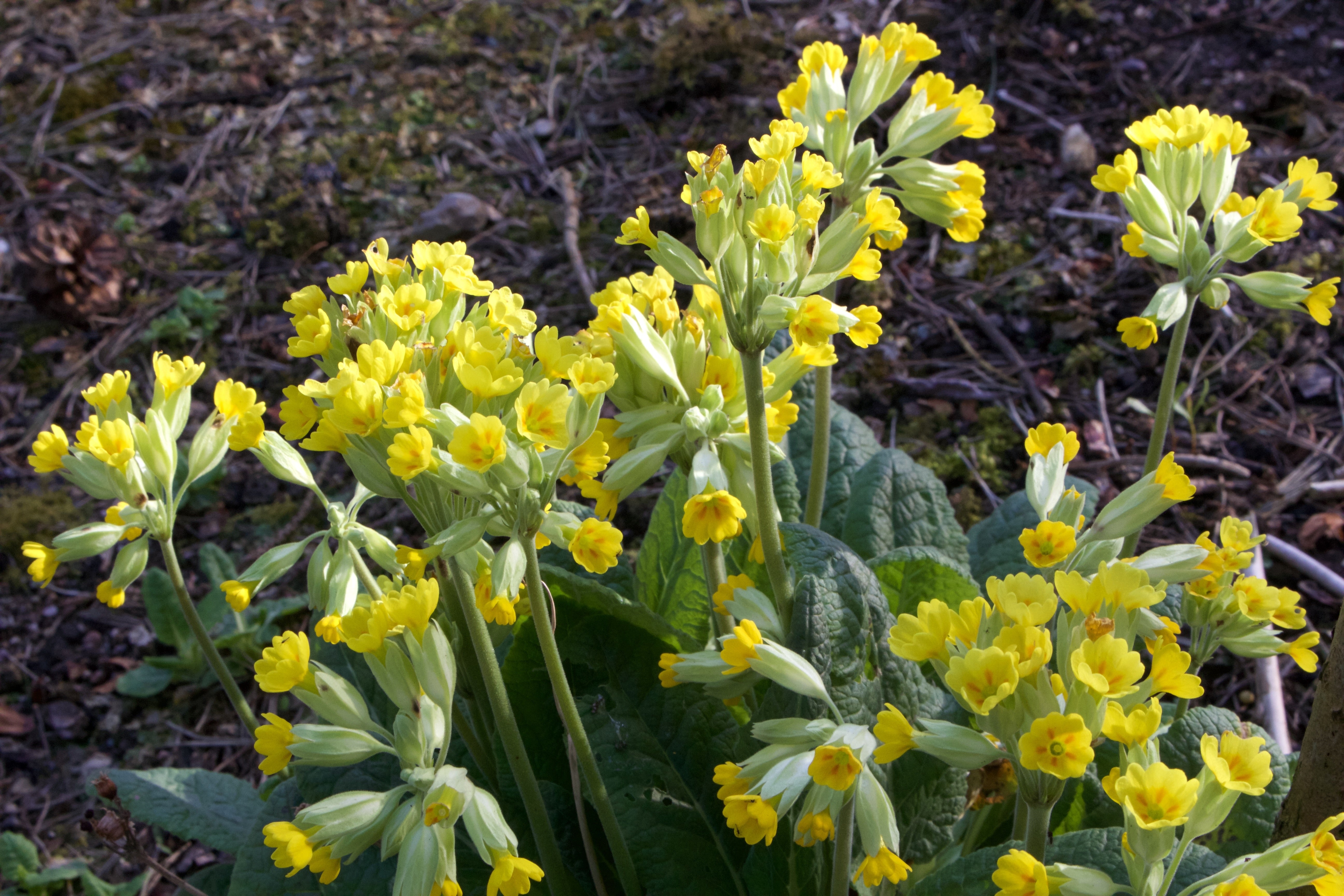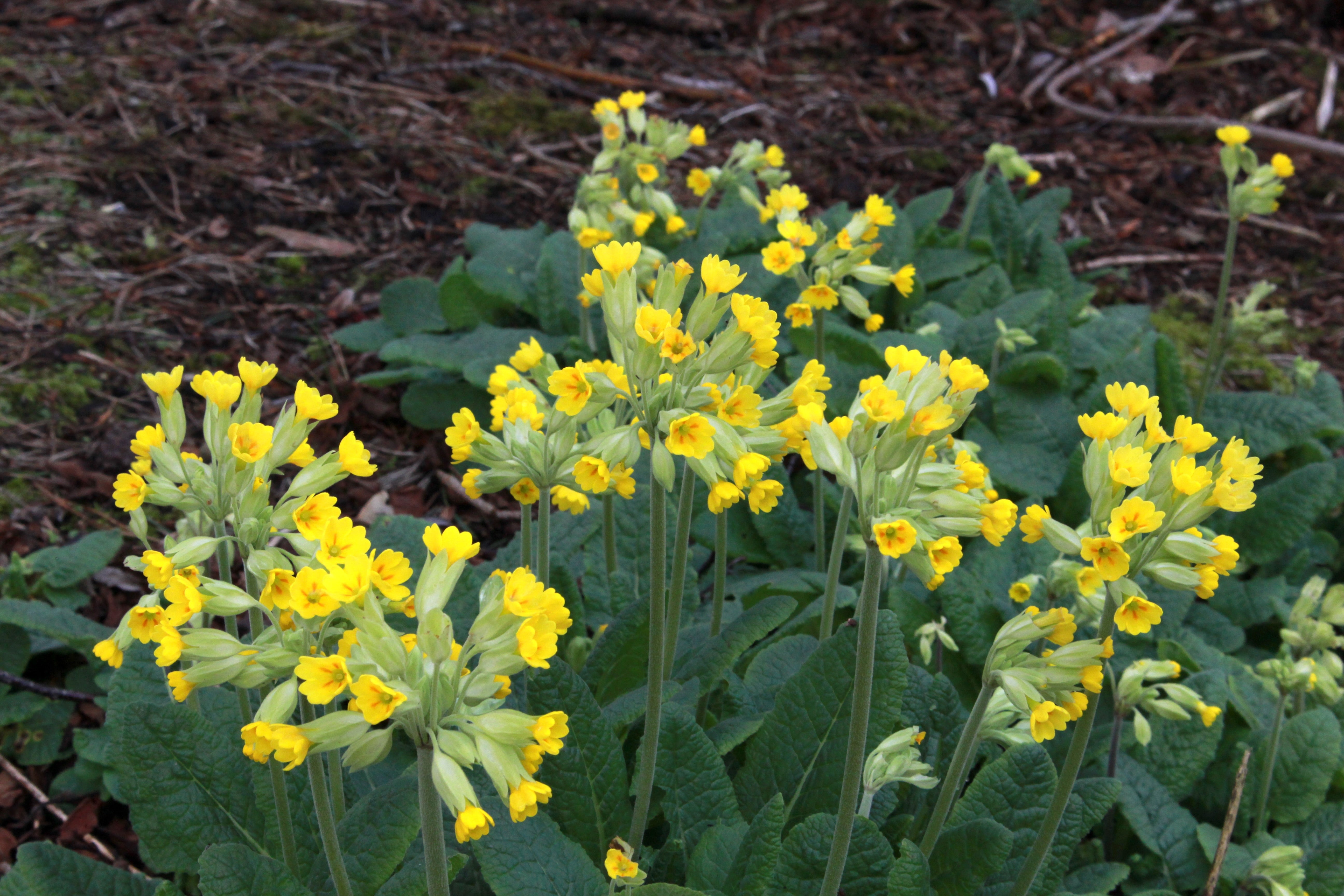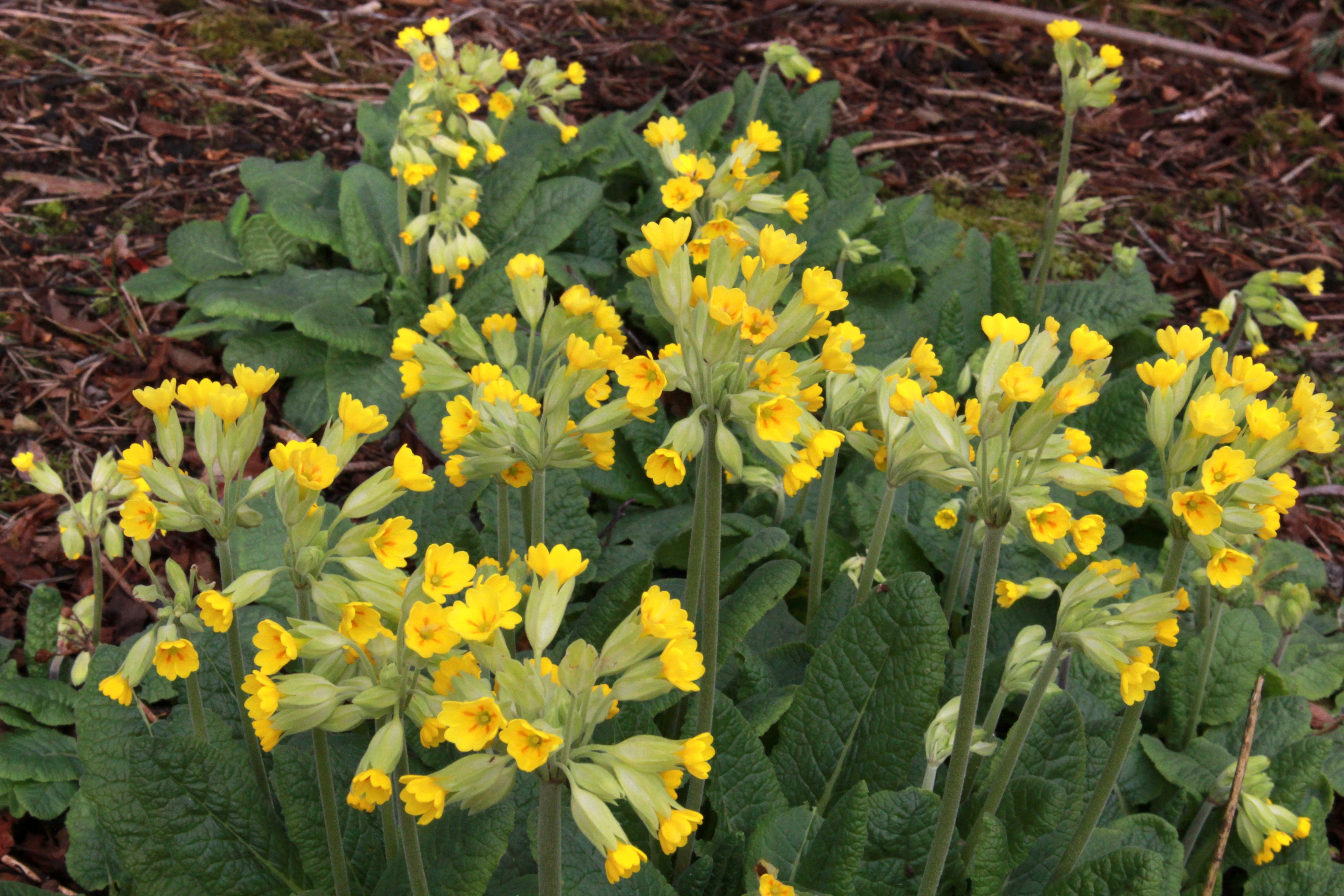Primula veris (Pr)
Approx. 0.5 litre pot
About this cultivar:
Primula veris is a charming and delicate perennial commonly known as the cowslip. The name cowslip is thought to originate from Old English, likely referring to cow dung (cow slop), as the plant was often found thriving in manure-rich pastures. Another theory suggests it simply describes the plant’s preference for damp, boggy ground—another typical cowslip habitat. The older term cowslop persisted in some dialects, but by the 16th century, the more refined cowslip became the standard name.
The Latin specific epithet 'veris' means ‘of spring’, perfectly reflecting its early-season blooms (tho Primula vulgaris often flowers earlier) rather than its growing medium!
Over the centuries, cowslips have been known by many colorful names, including cuy lippe, herb peter, paigle or pagil, peggle, key flower, key of heaven, fairy cups, petty mulleins, crewel, buckles, palsywort, and plumrocks.
This is a plant that belongs in every garden, brightening up meadows, borders, pots, and woodland edges. Its nodding clusters of golden-yellow flowers are not just beautiful but also a magnet for pollinators. A true classic.
This species frequently hybridises with other Primulas such as the common primrose Primula vulgaris to form false oxlip (Primula x polyantha). Plant them together to see...
Has the Royal Horticultural Society Award of Garden Merit (RHS AGM).
- Position: Full sun, Partial shade
- Soil: Well-drained, prefers alkaline to neutral soil, grows well in Ballyrobert
- Flowers: April, May
- Other features: Royal Horticultural Society Award of Garden Merit (RHS AGM)
- Hardiness: H7 - Hardy in the severest European continental climates (< -20°C), Fully hardy, grows well in Ballyrobert
- Habit: Clump forming
- Foliage: Semi-evergreen
- Height: 10 - 30 cm (0.3 - 1 ft)
- Spread: 10 - 30 cm (0.3 - 1 ft)
- Time to full growth: 2 to 5 years
- Plant type: Herbaceous Perennial
- Colour: Green, yellow
- Goes well with: Other spring wildflowers, ferns, and grasses
About this genus:
Primula (prim-u-la or pri-mul-a) is a genus of mainly herbaceous flowering plants in the primrose family (Primulaceae). The word primula is the Latin feminine diminutive of Primus, meaning first (prime), applied to flowers that are among the first to open in spring. Thus the Latin name translates as 'First flower'.
Primula include the familiar wildflower of banks and verges, the primrose (P. vulgaris). Other common species are P. auricula (auricula), P. veris (cowslip) and P. elatior (oxlip). They have been extensively cultivated and hybridised - in the case of the primrose, for many hundreds of years. Primulas are native to the temperate northern hemisphere, south into tropical mountains in Ethiopia, Indonesia and New Guinea, and in temperate southern South America. Almost half of the known species are from the Himalayas.
Primula is a complex and varied genus, with a range of habitats from alpine slopes to boggy meadows. The diversity of the primrose and its ability to hybridise fascinated Charles Darwin, who bred them. He was the first to point out that some flowers were pin-eyed, with a prominent style, while others were thrum-eye, with long stamens. He realised that pollen was picked up from the stamens of one flower and deposited on the style of the other by visiting bees. Short-stamened flowers tend to be self-fertile, while those with long-stamens need cross pollination, providing genetic diversity. Darwin presented a paper on these differences (described as a dimorphic condition) to the Linnean Society in 1862.
Plants bloom mostly during the spring, with flowers often appearing in spherical umbels on stout stems arising from basal rosettes of leaves; their flowers can be purple, yellow, red, pink, blue, or white. Most of the Primulas we have are cold hardy and tolerate quite a bit of moisture - some might even prefer waterlogged areas. They can grow in full-sun (with enough water), part shade and in almost full shade.

